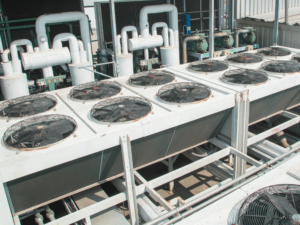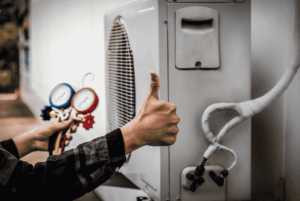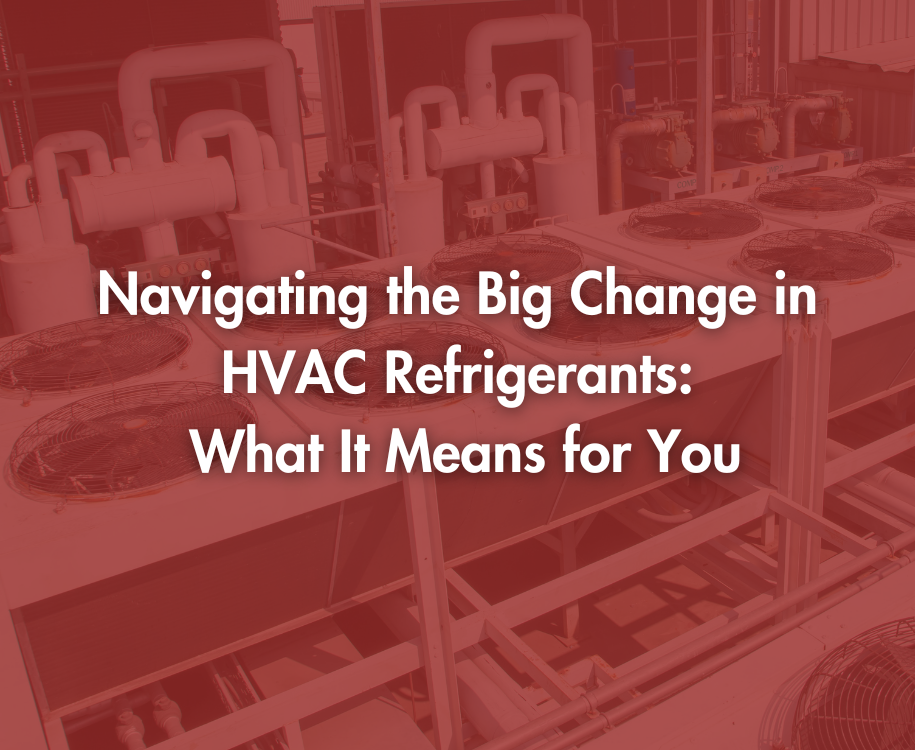By The Callidus Engineering Mechanical Team
As of January 1, 2025, the HVAC industry is entering a new phase, with the widely-used R410A & other high global warming potential (GWP) HFC refrigerants being phased out in favor of eco-friendlier alternatives. This change in HVAC refrigerants affects only newly manufactured HVAC systems, but it’s important to understand how it impacts your projects. Whether you’re managing facilities for a school board, developing new buildings, or contracting HVAC installations, this shift will shape future decisions.
Don’t worry—your current systems that use R410A or even older refrigerants like R22 don’t need to be replaced immediately. In fact, these systems can remain in operation for the foreseeable future. The focus now is on ensuring new installations comply with updated environmental standards, while also taking advantage of the potential long-term benefits of switching to low-GWP HVAC refrigerants.
Why The Change in HVAC Refrigerants Matters for Your Building
Historically, HVAC systems relied on R22, R410A, and other high-GWP refrigerants due to their fluorine content. These chemicals contribute to greenhouse gas emissions, which is why international agreements like the Montreal Protocol are driving the industry to adopt alternatives. Low-GWP refrigerants such as R-454B and R-32 are part of this push, offering a greener solution.
But what does this mean for you? If you’re planning new HVAC installations, these changes will affect your design choices. However, if your current systems use R410A or R22 and are in good working condition, there’s no need to replace them immediately. R410A will still be permitted in existing systems for years to come. The key impact is on future projects and understanding how the refrigerant landscape is evolving.
The Pros and Cons of New Refrigerants
- Energy Efficiency
One of the upsides of switching to low-GWP refrigerants like R-454B and R-32 is improved energy efficiency, with potential reductions in energy consumption of up to 5%. For large-scale facilities, these savings can add up significantly over time, making the transition a smart financial decision. - Future-Proofing and Cost Stability
As high-GWP refrigerants like R410A become harder to source, their prices will rise. Transitioning to low-GWP alternatives now can protect you from these cost spikes in the future. Many low-GWP refrigerants are also compatible with current systems, reducing the need for costly system overhauls. - Downsides to Consider
However, low-GWP refrigerants come with their own set of challenges. For one, they tend to be more expensive to purchase than older refrigerants like R410A. Additionally, many of the new options, such as A2L refrigerants like R-454B, are mildly flammable. This introduces new considerations for building safety, and proper installation and handling become more critical. While these refrigerants are safe when used correctly, their flammability is a factor that building owners and operators need to account for in planning.
What You Should Do Next
If you’re managing a building with older systems, here’s what you can do to stay ahead of the curve:
- Evaluate Your Current Systems
Start by assessing what refrigerants your existing systems use. If you’re running R410A or R22 and your systems are performing well, there’s no need for an immediate change. However, if you’re considering an upgrade, it’s worth exploring your options for low-GWP refrigerants. - Plan Future Installations or Retrofits
If you’re planning new HVAC installations or retrofitting old systems, familiarize yourself with the new refrigerants. Many low-GWP alternatives can work with your existing systems, but older units may require more substantial updates. HVAC manufacturers are a valuable resource to understand what equipment works best with these refrigerants and how to retrofit efficiently. - Consider Safety and Costs
When evaluating the switch, consider the higher initial costs of new refrigerants and the potential safety implications of flammability. Weigh these against the long-term savings in energy and the regulatory benefits of transitioning to greener options.
Stay Informed, Stay Ready For The Change in HVAC Refrigerants
The refrigerant landscape is changing, and with it, the way buildings are cooled and heated. While this transition may seem complex, it’s also an opportunity to reduce energy use, lower costs over time, and align with modern environmental standards. Your current systems can keep running, but now is the time to think ahead and plan for future changes.
Callidus Engineering is here to help you navigate these updates. Whether you need technical advice on retrofits or guidance on planning new installations, we’re ready to support your needs. And remember, HVAC manufacturers are another critical resource to help you understand your options and ensure your systems remain compliant and efficient.


